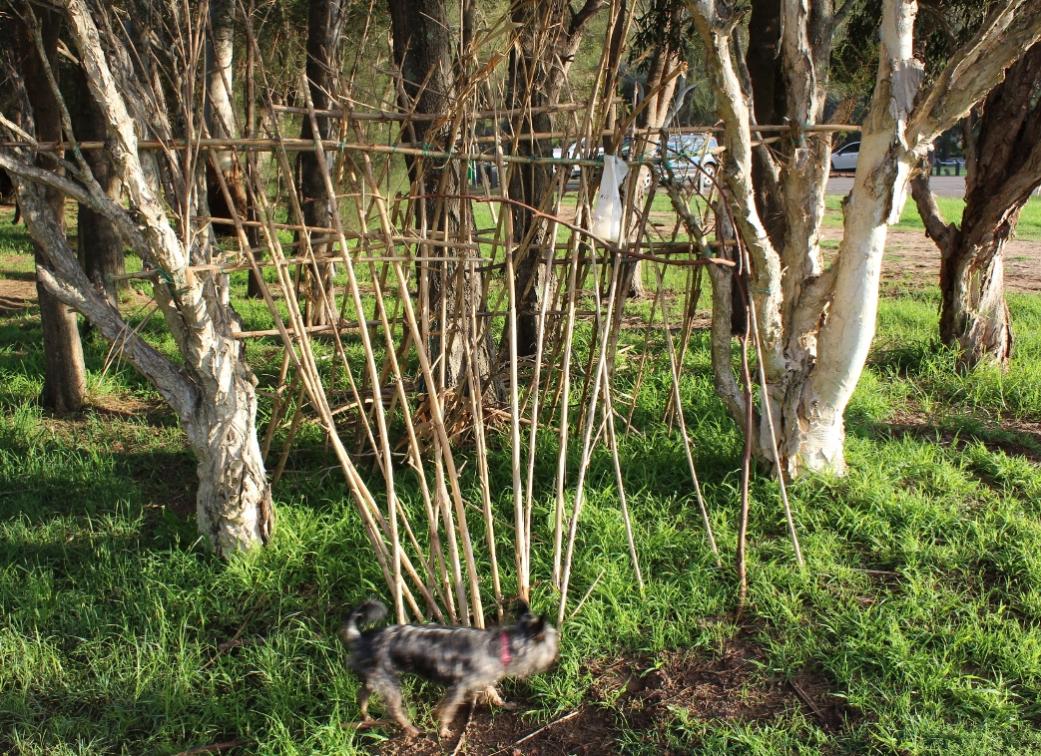Science Week 2018: Articles for Children and Young Adult Readership
Science Week 2018
It's Science Week again and we've loaded up the base of your page with a few examples of the wide range of subjects that you can dive deeper into when you choose to know more about something - in fact, about almost anything really!
Science (from Latin scientia, meaning "knowledge") is a systematic enterprise that builds and organises knowledge in the form of testable explanations and predictions about the universe.
The earliest roots of science can be traced to the works of Ancient Egyptians and Mesopotamians, whose contributions entered and shaped Greek natural philosophy of classical antiquity.
The assimilation of Greek and Islamic science into Western Europe during the 10th to 13th century preceded the revival of natural philosophy in the West, which continued to develop as the precursor of natural science from the Renaissance through the 19th century. Since the 17th century, scientific knowledge gradually became associated with the scientific method and was increasingly being formulated in terms of physical laws. In the 19th century, multiple distinguishing characteristics of contemporary science began to emerge.
Modern science is typically divided into three major branches that consist of the natural sciences (e.g. biology, chemistry, physics), which study nature in the broadest sense; the social sciences(e.g. psychology, sociology, economics), which study individuals and societies; and the formal sciences (e.g. mathematics, logic, theoretical computer science), which study abstract concepts.
Hope you all get a chance to find a few answers to that eternal question 'Why is this so?' this week!
Why is the sky blue?
Why don't dolphins grow legs?
Why does my brother keep pulling my hair?
Why do lemons taste sour?
Hmmmm....
The New Ipswich: 1947
STEM Kits Bring A New Level Of ‘Cool’ To Schools
August 6, 2018
By NSW Department of Education News
Students and teachers got a preview of the exciting new digital learning resources that will be available to NSW public schools from next term as part of the STEMShare Community program.
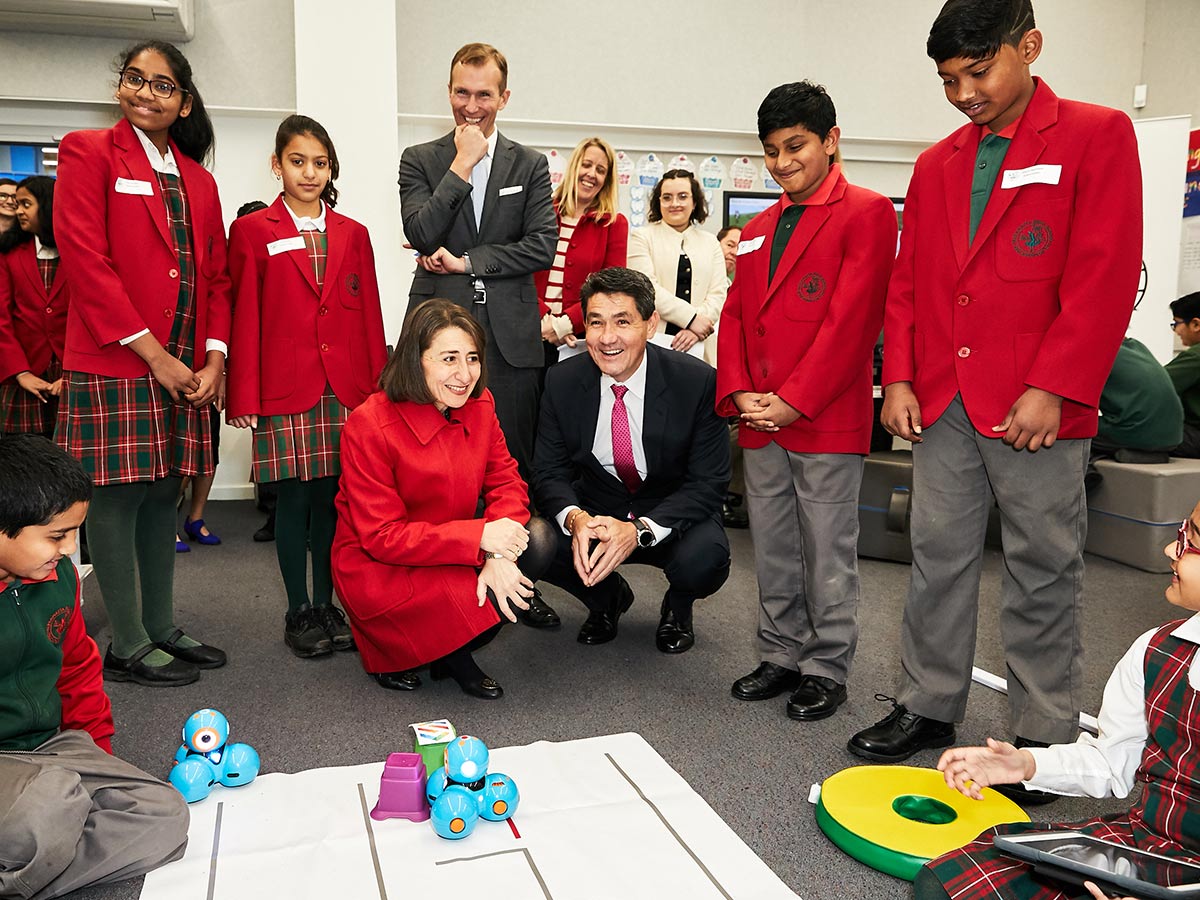
Parramatta Public School students show the Premier the new STEM kits.
Parramatta Public School students had a taste of the future today when Premier Gladys Berejkilian chose their school to launch a $23 million package of digital learning resources.
Virtual tours of ancient Egypt, robotics, coding and green screens were on offer with students Neil, Sunedha and Vaibhav showing off their coding skills to the Premier as they tested out the robotics kit.
Under the STEMShare Community program, 660 kits that include robotics, 3D printing, coding, film-making and virtual reality equipment will be available for schools to borrow for a term.
Ms Berejiklian said the new program would start in Term 4, ensuring every public school student had access to the latest learning resources.
“It is so inspiring to see young people learning to code, because we know the jobs of the future will require students to have those skills,” she said.
Ms Berejiklian said the STEM kits had the potential to unlock new pathways for students.
By example she said if they used the virtual reality kits to visit the International Space Station, it might inspire them into a career in the space industry.
Education Minister Rob Stokes said the STEMShare program included the technology kits, teacher training, expert support, curriculum-linked learning and online tools to ensure schools could make the most of the new resources.
“Our students will need to think critically, solve problems creatively, work in teams, communicate clearly in a range of media and continue to learn to engage with new and ever-evolving technologies,” he said.
“We are supporting our students to develop future skills for work and study.”
The new STEM kits were given the green light by Neil, Sunedha and Vaibhav.
The Year 3 students, who used iPads to code robots, said the technology made school more interesting.
“They are really cool and they are helping us learn in a modern way using things like coding,” Vaibhav said.
Former Gymea Bay Public School teacher Darren Avery is one of the new team of STEMShare Leaders advising schools and teachers on using the new kits.
Mr Avery said lessons for the kits covered a range of curriculum content and inspired students to think creatively and develop problem-solving skills.
“One of the things I’ve seen in my area as a teacher is that students are good at doing tests, but give them a problem and they really struggle to work through it,” he said.
“With these kits, a teacher can start students off with a simple challenge and the next thing they are giving you ideas and driving the lesson.”
The 660 STEMShare Community kits will provide iPads, laptops and other equipment - such as programmable robots, 360o cameras and virtual reality viewers - to primary and secondary schools.
Project-based STEM challenges are mapped to the NSW syllabus and Information and Communications Technology (ICT) general capabilities.
The kits will be available from the start of Term 4 in October 2018.
Go On A Reef Safari For Stamp Collecting Month
This August for Stamp Collecting Month, Australia Post is calling on Australians to go on a Reef Safari with the release of five beautiful stamps showcasing some of the diverse and threatened species found on the Great Barrier Reef.
Coinciding with the third International Year of the Reef (IYOR), a campaign by the International Coral Reef Initiative (ICRI), this year's Stamp Collecting Month asks collectors to take a closer look at how we can preserve this UNESCO World Heritage site.
Jane Cohen, Australia Post General Manager of Consumer, said Stamp Collecting Month is an exciting way for young students to engage in thought-provoking themes.
"In the International Year of the Reef, we're encouraging children to learn more about the environment and biodiversity of Australia's Great Barrier Reef through the special Reef Safari stamp issue. The five stamps highlight the beauty and diversity of species living in the largest coral reef system in the world – the Grey Reef Shark, Green Sea Turtle, Nautilus, Olive Sea Snake and Emperor Angelfish," said Ms Cohen.
"As one of the world's seven natural wonders and one of our most popular tourist locations, the Great Barrier Reef is home to billions of organisms, corals, and marine life. Sadly, climate change has placed the reef under pressure like never before, and we hope these stamps can highlight the things we can do to make a difference."
Professor Ove Hoegh-Guldberg, Director of the Global Change Institute and Professor of Marine Science at The University of Queensland, reinforced the need for climate action as well as the importance of educating the community about the threats.
"Urgent protection is needed to save the reef, or Australia and the world risk losing a global treasure that provides enormous economic, social, and environmental benefits to hundreds of millions of people. Time and time again, we are seeing devastating impacts on coral reefs when sea temperatures warm even for short periods. If average global temperatures increase by 1.5 degrees above the pre-industrial period - a point just decades away - many scientists think that most coral reefs will become unviable. We must put the brakes on climate change for the sake of coral reefs," he said.
The stamps and associated products will be available from 1 August in participating Post Offices, via mail order on 1800 331 794, and online at auspost.com.au/stamps while stocks last.
Online education resources such as lesson plans for primary school classes, information on each species featured, and more can be found at auspost.com.au/scm
Visit the Australia Post Collectables websiteauspostcollectables.com.au for more information on Australian stamp issues.
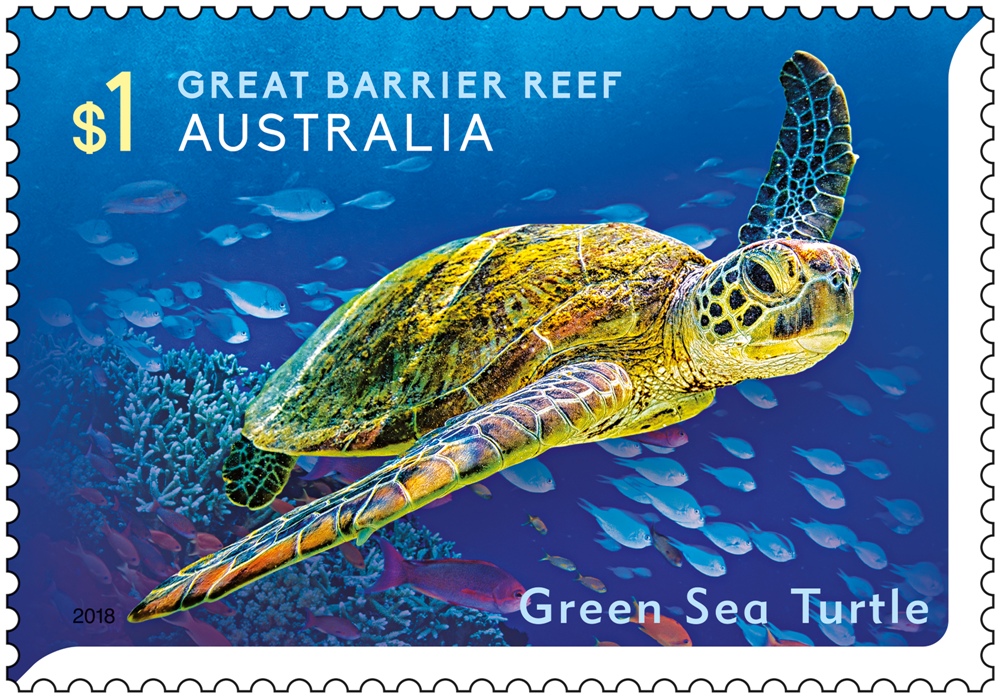
Great Barrier Reef - Green Sea Turtle
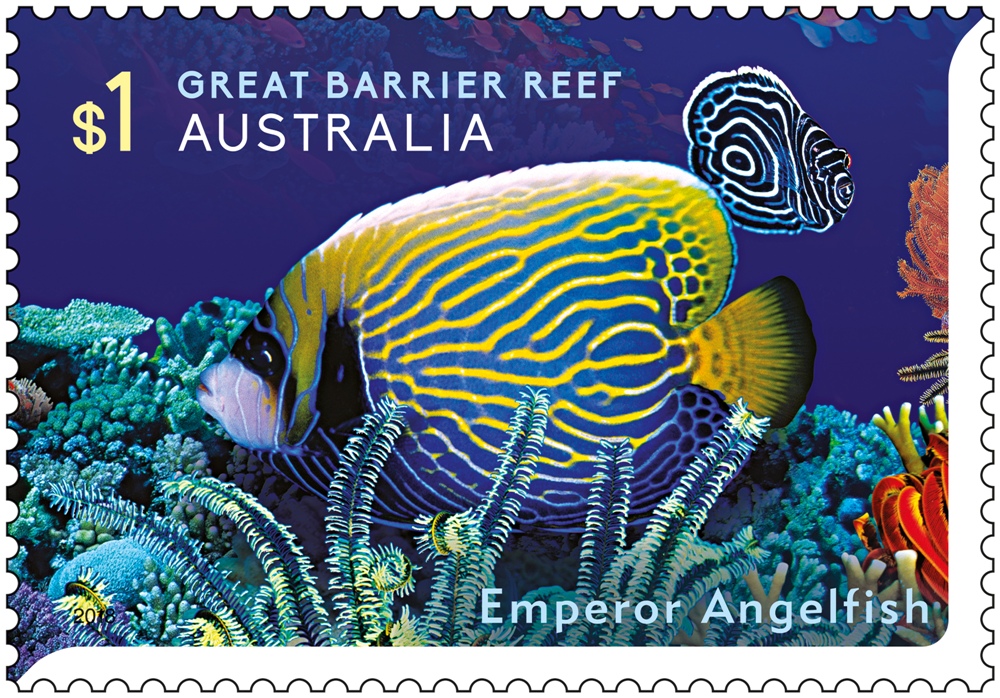
Great Barrier Reef - Emperor Angelfish
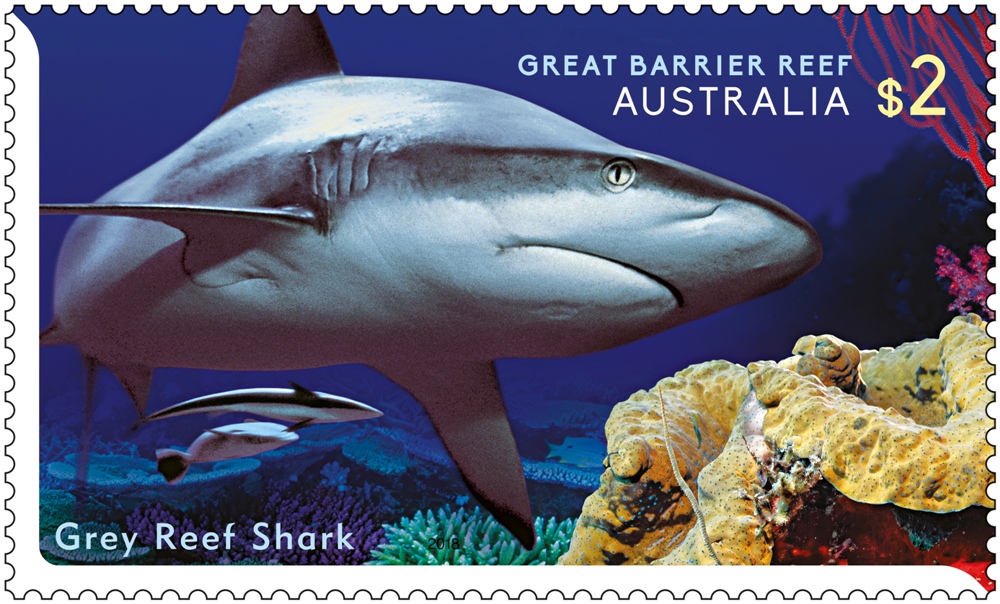
Great Barrier Reef - Grey Reef Shark
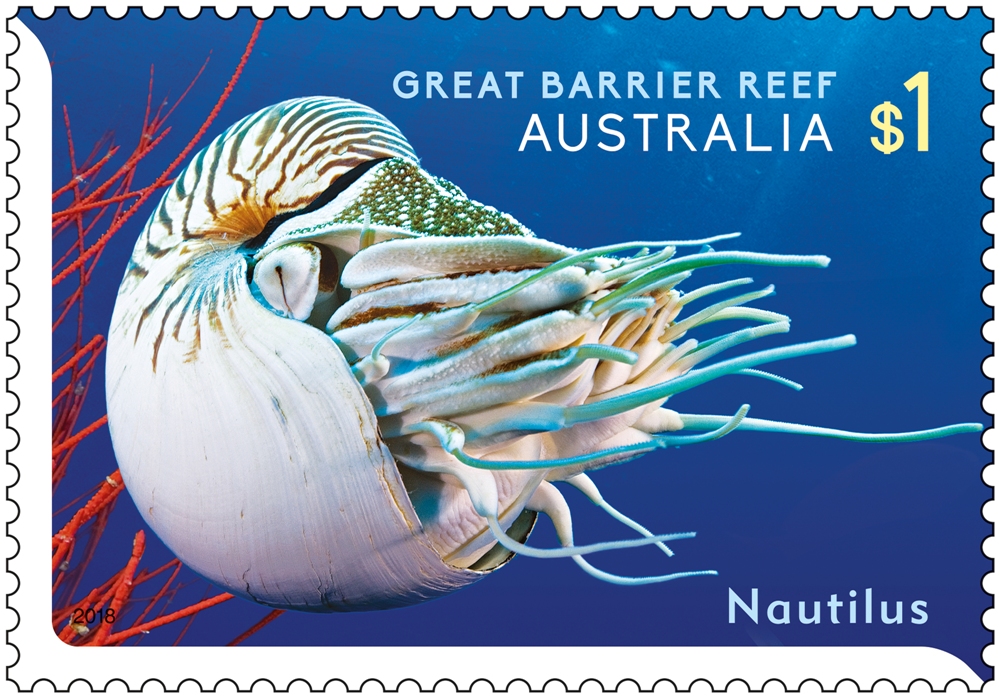
Great Barrier Reef – Nautilus
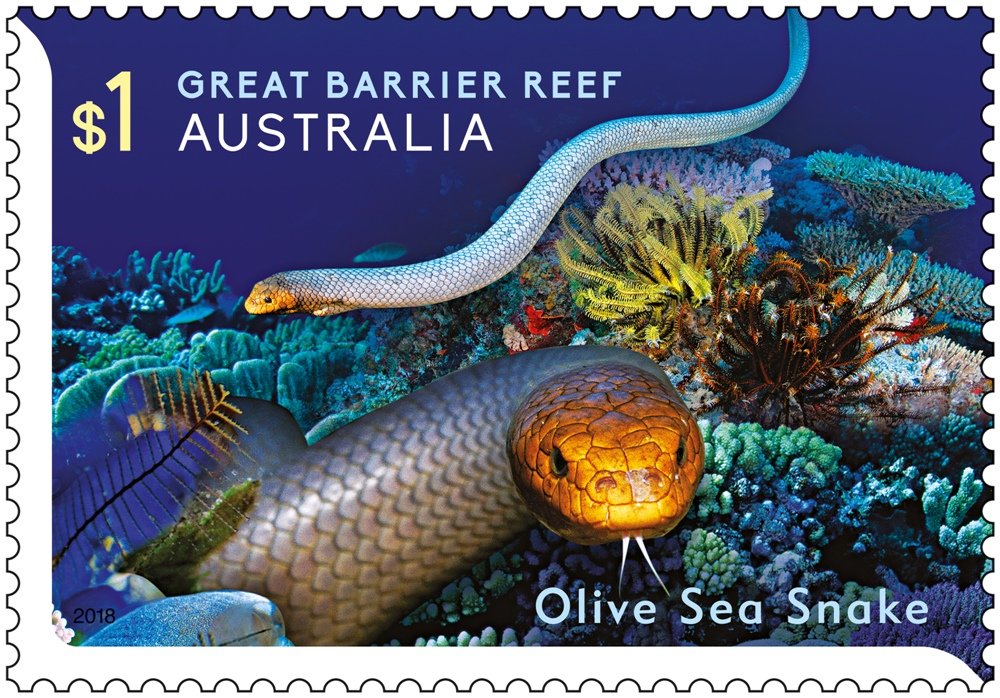
Great Barrier Reef - Olive Sea Snake
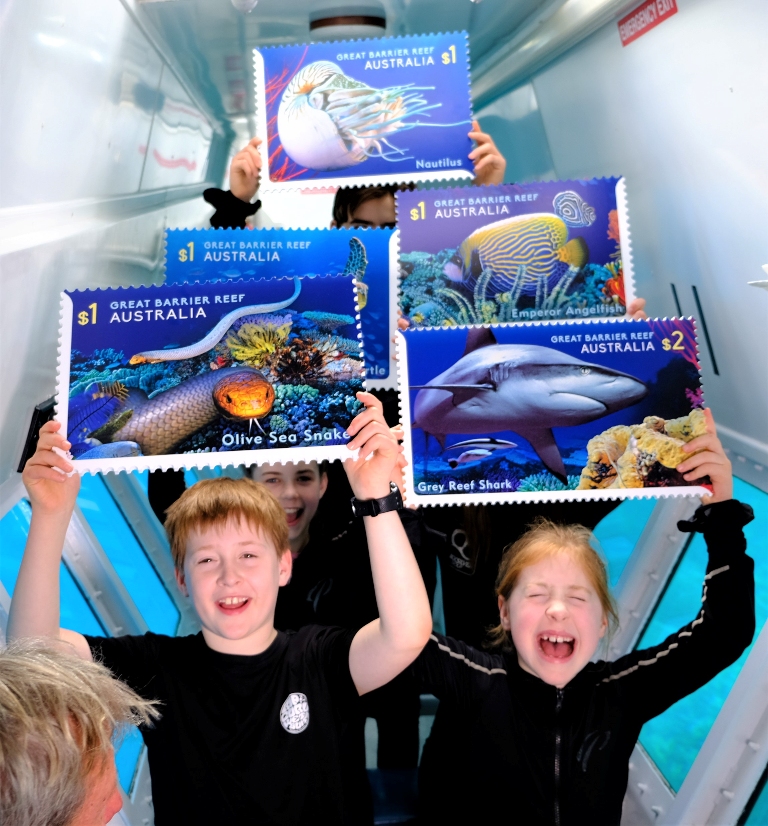
Go on a Reef Safari for Stamp Collecting Month
2018 Layne Beachley Camp At The Newly Expanded Surfing Australia High Performance Centre (HPC) A Big Success
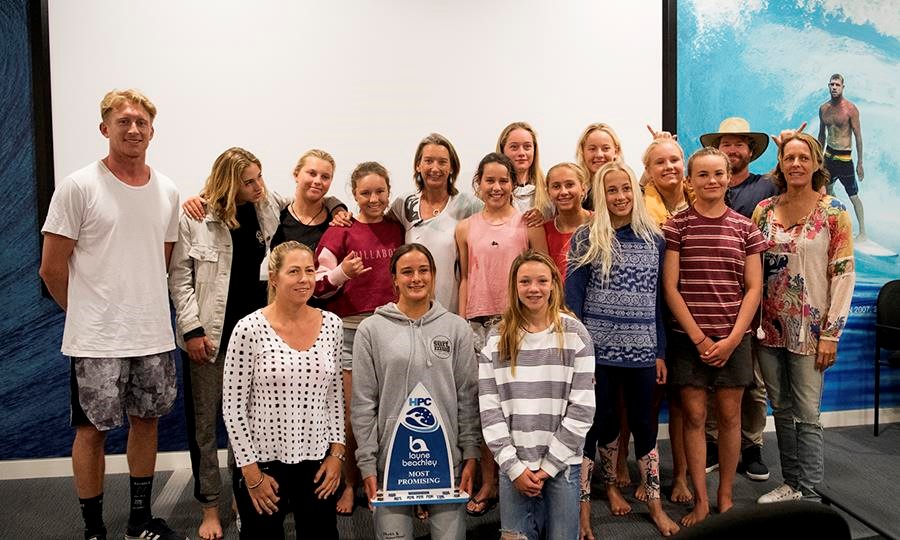
Yellomundee Living Culture Camp 2018
Victorian Fossil Find Uncovers Prehistoric Leftovers Of Colossal Shark Feast
August 9, 2018
By Museums Victoria
A visit to his local beach will never be the same again for Philip Mullaly. The keen-eyed fossil enthusiast has found an extraordinary set of shark teeth - evidence that a shark nearly twice the size of a Great White once stalked Australia’s ancient oceans. The citizen scientist made the find in Jan Juc, a renowned fossil site along Victoria’s Surf Coast.
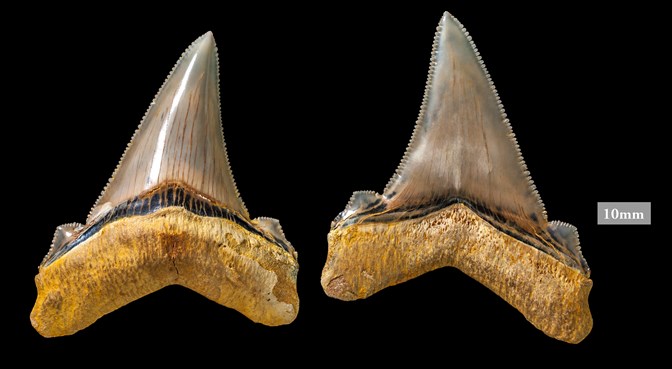
Carcharocles angustidens teeth
“I was walking along the beach looking for fossils, turned and saw this shining glint in a boulder and saw a quarter of the tooth exposed. I was immediately excited, it was just perfect and I knew it was an important find that needed to be shared with people,” recounts Mr Mullaly.
Up to 7 cm long, the teeth have been identified as from an extinct species of mega-toothed shark - the Great Jagged Narrow-Toothed Shark (Carcharocles angustidens) - which could grow to more than 9-metres long, almost twice the length of today’s Great White Shark.
This shark stalked Victoria’s ancient sea approximately 25 million years ago, during the late Oligocene epoch. It was the top predator and would have preyed on small whales.
Recognising the significance of the discovery, Mr Mullaly contacted Dr Erich Fitzgerald, Senior Curator of Vertebrate Palaeontology at Museums Victoria with an offer to donate the teeth to Museums Victoria’s collection, an offer gratefully accepted.
Almost all fossils of sharks worldwide are just single teeth, so it is extremely rare to find multiple associated teeth from the same shark.
This is because sharks, who have the ability to regrow teeth - lose up to a tooth a day. Cartilage, the material a shark skeleton is made of, does not readily fossilise.
“These teeth are of international significance, as they represent one of just three associated groupings of Carcharocles angustidens teeth in the world, and the very first set to ever be discovered in Australia,” Dr Fitzgerald explains.
“By donating his discovery to Museums Victoria, Phil has ensured that these unique fossils are available for scientific research and education both now and for generations to come. This is absolutely essential for documenting and preserving Australia’s prehistoric history.”
Realising Mr Mullaly's haul was all from the same species, Dr Fitzgerald suspected that the teeth came from one individual shark and there might be more teeth still entombed in the rock at Jan Juc.
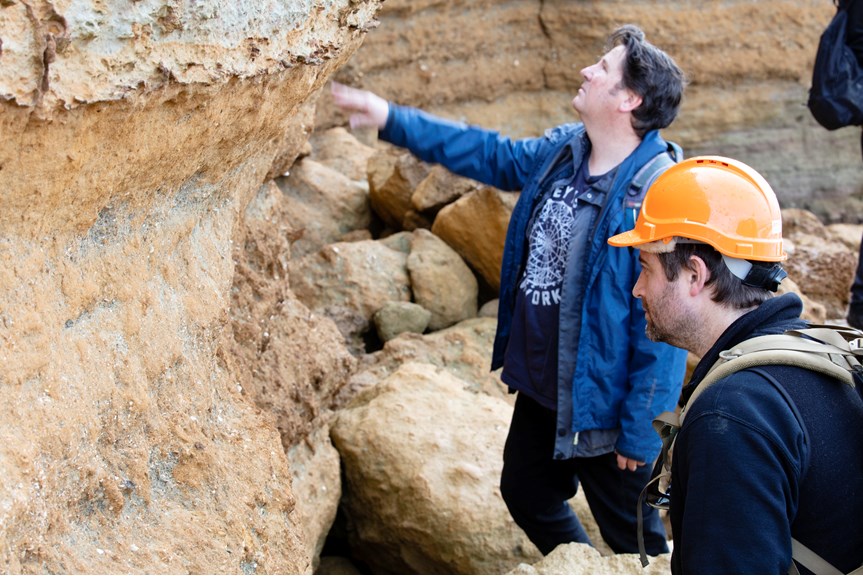
Dr Erich Fitzgerald and Philip Mullaly at the Jan Juc site the fossils were found
So, in December 2017 and January 2018, Dr Fitzgerald led a team of Museums Victoria palaeontologists, volunteers, associates and Mr. Mullaly on two expeditions to excavate the site.
Battling summer heat, and with only a tiny window each day to access the site at low tide, the team dug out the entire boulder, collecting more than 40 teeth.
Most of the teeth belonged to the giant shark Carcharocles angustidens, but in addition, several smaller teeth were found revealing something even more surprising...
In amongst the boulder, were several teeth of a smaller shark, the Sixgill Shark (Hexanchus).
According to Museums Victoria palaeontologist Tim Ziegler, these teeth came from several different individuals and would have become dislodged from their jaws as they fed on the huge carcass of the Carcharocles angustidens after it died.
“The teeth of the sixgill shark work like a crosscut saw, and tore into the Carcharocles angustidens like loggers felling a tree. The stench of blood and decaying flesh would have drawn scavengers from far around.
“Sixgill sharks still live off the Victorian coast today, where they live off the remains of whales and other animals. This find suggests they have performed that lifestyle here for tens of millions of years.”
This new discovery cements Jan Juc as one of Australia’s most important fossil sites, as it continues to provide us with unique insights into the deep history of Australia’s marine life including whales, dolphins, sharks and countless smaller marine animals.
The general public will have a rare and limited opportunity to see these incredible teeth specimens when they go on display at Melbourne Museum ahead of National Science Week on Thursday 9 August. They will be on display until Sunday 7 October.
The Mega Shark Fossil Find display will feature all 45 fossil shark teeth, as well as state-of-the-art life-sized 8-metre long digital animation which will appear to swim around the gallery floor surrounding the showcase.
For National Science Week, Melbourne Museum has programmed a suite of palaeontology events, including fossil identifications, Jurassic Park 3D in IMAX (18 Aug), Science On Show (19 Aug) and The Giants of Palaeontology talk with Dr Fitzgerald and fellow Museums Victoria palaeontologist Dr Tom Rich (19 Aug).
Museums Victoria’s field research at Jan Juc is carried out with the support of the Department of Environment, Land, Water and Planning, Surf Coast Shire Council and the Great Ocean Road Coast Committee.
Delightful Diamond Firetails - Capertee Valley
Urban Play In Urban Parks
